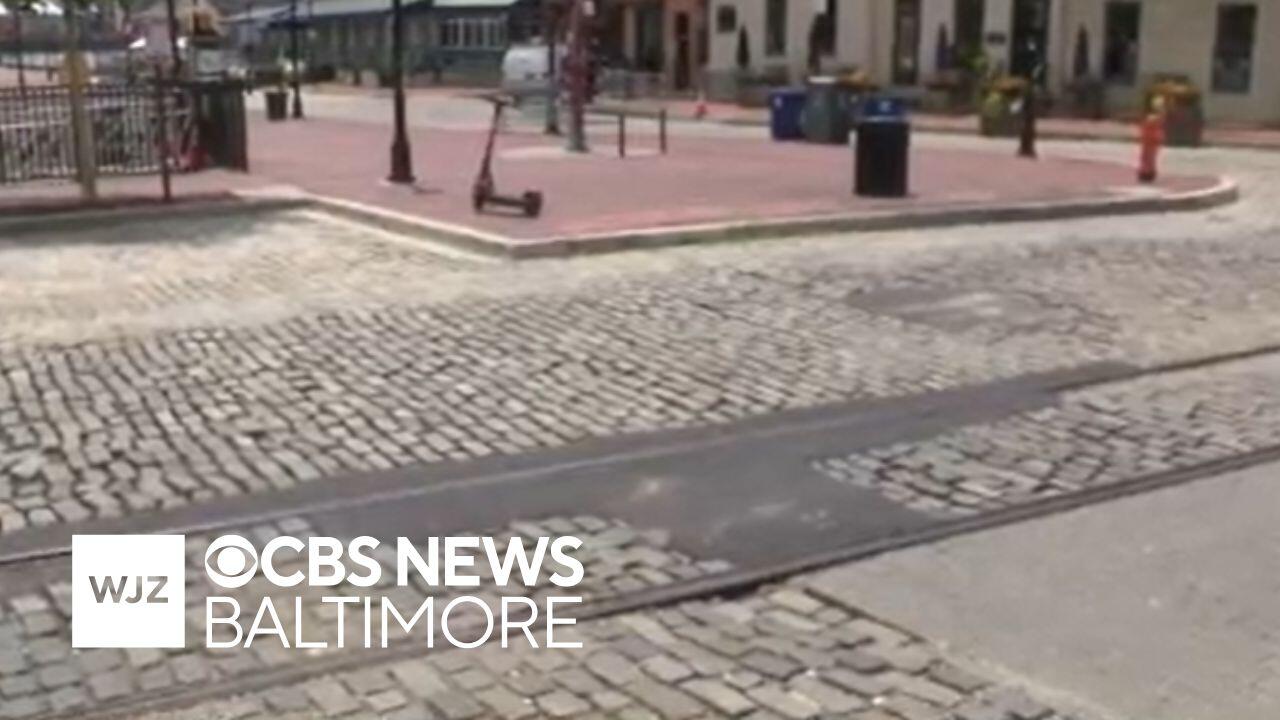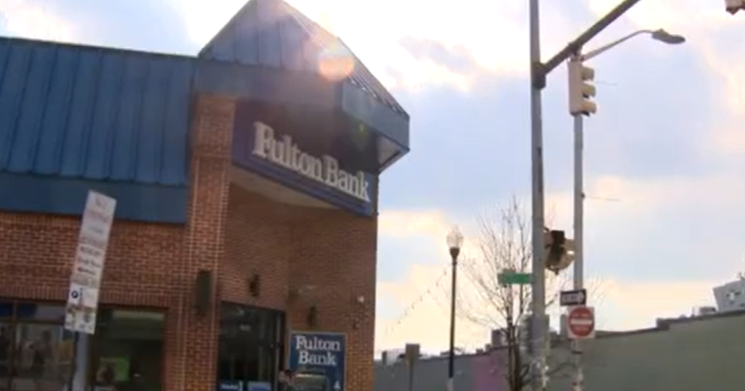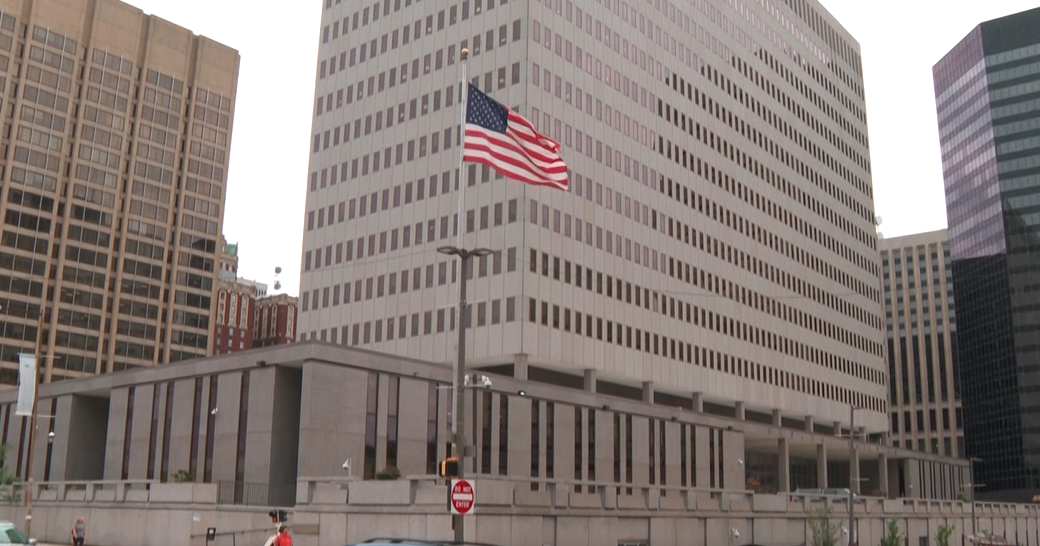Baltimore removes parts of asphalt after advocates raise concerns about historic Fells Point road
The Baltimore Department of Transportation (DOT) removed some asphalt Tuesday afternoon after preservation advocates raised concerns about paving over a historic Fells Point road.
According to the Society for the Preservation of Federal Hill and Fells Point, the "inappropriate repairs" in the 1500 to 1800 blocks of Thames Street took place despite years of concerns and visits by advocates and transportation officials.
On Tuesday, while covering the story, WJZ watched the DOT remove some parts of the asphalt.
"They're four inches deep and they're heavy," said David Gleason, the president of The Society for the Preservation of Federal Hill & Fell's Point. "Over time, the Belgian block has deteriorated…due to water conditions, due to traffic."
Road repairs in historic Fells Point
The preservation group claims that the improper use of asphalt patches further degraded the historic street's Belgian block surface.
"To date, there was no notification that any of this asphalt was going to be installed or covered over the railroad tracks," Gleason said.
"Most notably, the Department of Transportation (DOT) has egregiously , which clearly requires that all repairs be reviewed by the Commission for Historical and Architectural Preservation (CHAP) before they begin," the group said in a letter to city leaders.
The group also said the project violated the , also called CHAP guidelines, which promote responsible preservation practices.
Under the city's CHAP guidelines, builders are urged to "preserve historic street paving materials where they still exist, even if the paving materials have been covered by later paving."
The guidelines also ask builders to "assess the potential impact upon the character of individual streets and alleys" when starting new construction projects or improvements.
In their letter, advocates said the community has been requesting repairs to Thames Street for the past decade. Around 2018, the city provided an estimate for the restoration project.
"Regrettably, instead of following these documented and agreed-upon directives, DOT proceeded unilaterally with a hot patch asphalt repair, bypassing essential consultations," advocates wrote. "This action undermines public trust and constitutes a serious breach of established protocols."
In the letter to city leaders, the group demanded a timeline for when the damaged street can be repaired. On Tuesday, some parts of the pavement were removed from Thames Street.
"We need somebody to push," said Tiffany Friend, a Baltimore County resident who frequents Fells Point. "Otherwise, they'll pave it all over with asphalt and we'll never see it again. This is part of the aesthetic of Baltimore, and we need it to stay."
In a statement from Baltimore City DOT, officials said the department made temporary repairs to ensure the area was safe.
City DOT says, "This is our standard procedure until permanent repairs with the historic cobblestones could be made. BCDOT crews are on location today starting permanent repairs to restore the roadway with Belgian blocks. We anticipate this repair work to be complete in approximately a week, weather and scheduling permitting."
WJZ has reached out to the mayor's office for comment and has not heard back.
History of Baltimore's Fells Point
Parts of Fells Point are known for their historic significance, and the preservation society, which was founded in 1967, aims to ensure that historic areas of Baltimore are renovated and maintained in keeping with city guidelines.
The Fells Point waterfront served as one of the biggest seaports in the U.S. during the British War of 1812, and was a major supply channel for guns and flour during the Revolutionary War,
Thames Street, where the paving project took place, features historic buildings, including the Merchant's House, which was built in the 1790s. Preservation advocates have worked to revive the area as a major commercial and residential corridor.





